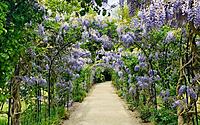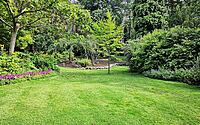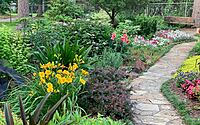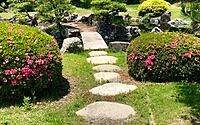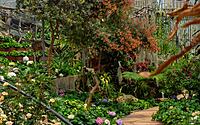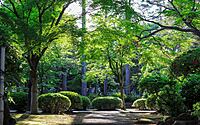How to Design a Garden for Relaxation and Enjoyment
Gardening can be a great way to connect with nature and relax in your own backyard. With the right design, you can create a space that is both beautiful and functional. In this article, we’ll explore some tips and tricks on how to design a garden for relaxation and enjoyment. Whether it’s choosing the right plants, selecting comfortable furniture, or making use of natural features, these ideas will help you create a space that is sure to bring hours of pleasure. So read on and start planning your perfect garden now!
Define what relaxation and enjoyment mean to you
For some people, relaxation and enjoyment might mean spending time in a secluded, natural setting surrounded by peace and quiet. For others, it might mean being in the company of close friends and family, laughing and joking around a fire pit. And for others still, it might simply mean having a well-designed space to call their own where they can go to escape the hustle and bustle of everyday life.
No matter what relaxation and enjoyment mean to you, there are certain design elements that can help create a space that is conducive to those feelings. Here are a few tips for designing a garden for relaxation and enjoyment:
1. Choose calming colors: When it comes to color, less is often more when trying to create a relaxing atmosphere. Stick with muted tones and earthy hues to help promote a sense of calm.
2. Incorporate soft lighting: Lighting is key in setting the mood of any space. In your garden, opt for softer, ambient lighting rather than harsh overhead lights. String lights, solar lights, and lanterns are all great options.
3. Add comfortable seating: What’s relaxation without a comfortable place to sit? Incorporate plenty of seating options into your garden design, so you can kick back and enjoy the fruits of your labor. Benches, chaises, hammocks, and porch swings are all great choices.
4. Create privacy: If you want to truly relax in your garden, you need to be able to feel safe and secure. Try using a trellis, fence, or shrubs to create a sense of privacy.
5. Incorporate water: The sound of running water is often associated with relaxation and can be a great addition to your garden design. Consider incorporating a fountain, pond, or birdbath for added tranquility.
6. Add plants: Incorporating plants into your garden design will help bring in the beauty of nature and promote feelings of peace and serenity. Opt for plants that are known for their calming properties, such as lavender or sage.
Decide on a garden size that is comfortable for you
Deciding on a garden size that is comfortable for you is important. If you have a large space, you can go all out and make a big, beautiful garden. However, if you have a smaller space, you can still create an enjoyable garden by being more selective with your plants and design. Plus, garden outdoor features are easy to maintain so even the smallest of gardens can be a peaceful retreat. How much time do you have to dedicate to gardening? If you only have a few hours a week to spare, then a smaller garden may be more manageable. How much money are you willing to spend on plants and supplies? A large garden will require a bigger budget than a small one. What is the purpose of your garden? Are you looking to grow food or flowers? Do you want to attract wildlife or create a tranquil space for yourself? Knowing the purpose of your garden will help narrow down the size. No matter what size garden you decide on, the most important thing is that it brings you joy.
Choose plants that are aesthetically pleasing
Aesthetics are important when choosing plants for your garden. Consider the color, texture, and shape of the plant when making your selection. The plant should complement the design of your garden and add to its overall beauty. For example, if you have a modern garden, choose plants with sleek lines and bold colors. If you prefer a more natural look, opt for plants with softer shades and textures. Some popular plants that can add beauty to your garden include roses, lavender, irises, hostas, ferns, daisies, and sunflowers. Additionally, consider the climate and growing conditions of your garden to ensure that you select plants that are best suited for your specific environment.
Incorporate elements that will promote relaxation
When you are planning to design a garden for relaxation and enjoyment, there are certain elements that you should incorporate in order to promote relaxation. One of the most important elements is water. The sound of running water is very soothing and can help to relax the mind and body. Water features such as fountains, ponds, or waterfalls are ideal for creating a relaxing atmosphere.
Another element that can promote relaxation is vegetation. Incorporating plants into your garden design can provide a sense of serenity and peace. Choose plants that are known for their calming properties, such as lavender or chamomile.
In addition to water and plants, you may also want to consider incorporating other features into your garden design that can promote relaxation. For example, adding comfortable furniture will create a space where you can sit back and enjoy the peaceful surroundings. Adding lighting fixtures can also create a relaxing ambiance in your garden.
Keep in mind that each person finds different elements to be relaxing, so make sure to consider what type of atmosphere you’d like to create when designing your garden.
Designing a garden for relaxation and enjoyment is an incredibly rewarding task that can transform the look of your outdoor space. With some careful consideration, you can create a beautiful, tranquil area that you can use to unwind and recharge. Whether it’s adding comfortable seating or choosing plants with calming scents, there are many ways to bring beauty and tranquility into your outdoor oasis. Once everything is in place, all that’s left to do is take time to sit back and enjoy the view!
- by Matt Watts

